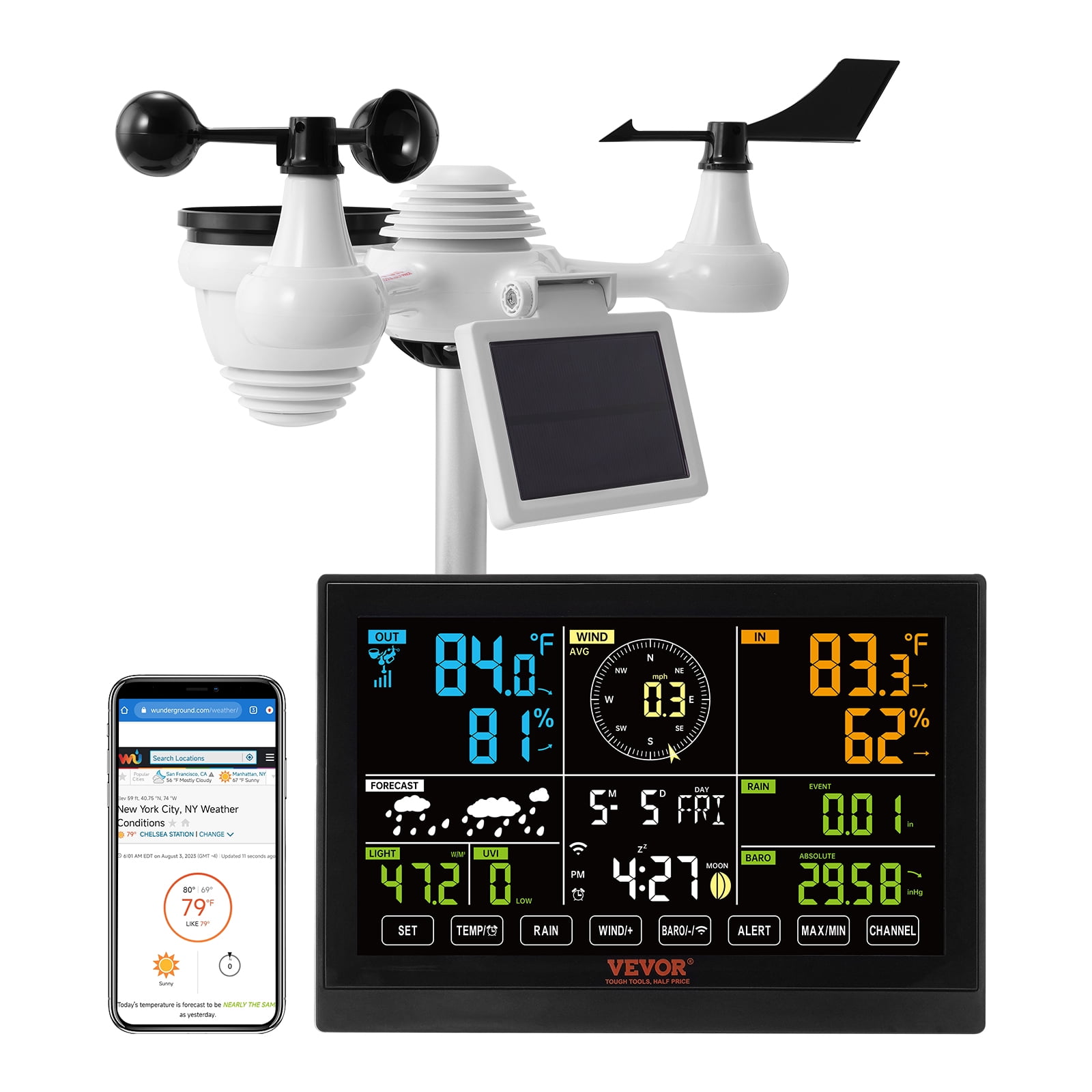The Ultimate Purchaser's Guide to Weather Stations: What You Need to Know
The Ultimate Purchaser's Guide to Weather Stations: What You Need to Know
Blog Article
Exploring the Various Sorts Of Expert Weather Terminals for Accurate Information Collection
When it comes to picking the proper weather station for information collection, the market supplies a selection of choices tailored to different demands and setups. Allow's explore the nuances of these specialist climate stations to grasp their unique capabilities and figure out the finest fit for specific data collection needs.
Digital Weather Condition Stations
In the world of meteorological instrumentation, digital climate stations stand out as innovative tools for specific information collection and analysis. These innovative stations are equipped with sensing units that capture a vast array of weather specifications such as temperature, moisture, barometric pressure, wind speed, and instructions. The data collected by electronic climate stations is transferred wirelessly to a central console or a computer for real-time surveillance and evaluation.
One of the crucial advantages of digital climate stations is their capacity to offer high-resolution information with accuracy and reliability. This degree of precision is crucial for different applications, including farming, research, air travel, and emergency situation action. Additionally, digital climate terminals typically feature software that enables customers to picture the information in different styles like graphes and charts, helping with much easier analysis and decision-making.
Wireless Weather Condition Terminals
Structure on the abilities of electronic weather condition terminals, cordless weather condition stations use improved comfort and versatility in information transmission and tracking. By using wireless innovation, these weather condition stations get rid of the need for cumbersome wired connections, enabling very easy installment in different locations. The cordless feature makes it possible for real-time information surveillance from remote locations, offering meteorologists and weather enthusiasts with instantaneous accessibility to essential details.
Wireless weather terminals usually contain sensing units that gather data on temperature level, moisture, barometric pressure, wind rate, and direction. These sensing units wirelessly transmit the information to a central console or receiver, where it is refined and shown for evaluation. Some progressed wireless weather condition stations can also connect to the net, allowing customers to access their weather condition information remotely via computer systems or smartphones.

Prosumer Weather Stations
What differentiates Prosumer Climate Stations from traditional consumer-grade weather condition terminals? Prosumer Climate Stations bridge the void between consumer-grade and professional-grade devices, using even more advanced features and higher accuracy than normal home climate terminals. These stations are developed for weather condition lovers, amateur meteorologists, and small services that call for even more specific information than what customer versions can give.
Prosumer Climate Stations often include a wider array of sites sensing units to gauge added atmospheric criteria such as UV index, fallen leave moisture, and dirt wetness. They likewise have a tendency to have a higher level of sturdiness and dependability, making them appropriate for long-lasting outdoor use in various ecological problems.


Industrial Weather Terminals
Industrial Climate Stations, likewise referred to as meteorological tracking Click This Link systems, are specialized tools developed for durable and precise weather data collection in commercial setups. These terminals are tailored to satisfy the special needs of industrial procedures where exact weather condition info is vital for safety, effectiveness, and decision-making processes.
Industrial climate stations are equipped with innovative sensors that can determine a large range of atmospheric specifications such as temperature level, humidity, wind speed and direction, barometric stress, and precipitation (Weather Stations). These stations are often ruggedly built to hold up against severe ecological problems commonly found in industrial environments
One secret feature of industrial weather stations is their ability to offer real-time data tracking and evaluation. This permits industrial centers to anticipate weather-related risks, enhance procedures based upon weather, and make certain the safety and security of employees and devices. Furthermore, industrial weather stations can be incorporated right into existing commercial control systems for seamless data monitoring and automation.
Mobile Weather Condition Stations
Unlike fixed commercial climate stations, portable climate terminals use versatility and mobility for on-the-go information collection in numerous environmental settings. These portable systems are developed to be easily transferred to different areas, making them suitable for field study, emergency situation reaction situations, farming, building sites, and outside events.
Mobile weather condition stations normally include sensing units for determining parameters such as temperature level, humidity, barometric stress, wind speed, and wind instructions. Some advanced models may also include additional sensing units for checking rainfall, solar radiation, and UV degrees. Despite their tiny size, mobile weather terminals are qualified of offering exact and trustworthy data similar to that of bigger, repaired terminals.
One of the essential advantages of portable weather condition terminals is their best site fast release and ease of arrangement. Overall, portable weather stations are vital devices for specialists calling for mobile, exact, and prompt weather information in diverse setups.
Conclusion
In final thought, professional climate terminals come in different types such as digital, wireless, prosumer, commercial, and portable. By understanding the distinctions between these types of climate stations, individuals can make enlightened decisions to guarantee they get the most specific and trusted climate information for their purposes.
Climate))))
Building on the capacities of digital climate stations, cordless weather condition terminals provide boosted comfort and flexibility in information transmission and monitoring. Some progressed wireless weather condition stations can even attach to the web, permitting individuals to access their climate data from another location via smart devices or computers.
Prosumer Weather condition Stations bridge the void between professional-grade and consumer-grade equipment, using even more advanced functions and greater accuracy than common home climate stations. Weather Stations. Generally, mobile weather stations are very useful tools for experts calling for mobile, accurate, and timely weather condition details in diverse setups
By comprehending the distinctions in between these types of weather condition terminals, people can make enlightened choices to ensure they get the most dependable and specific weather data for their functions.
Report this page